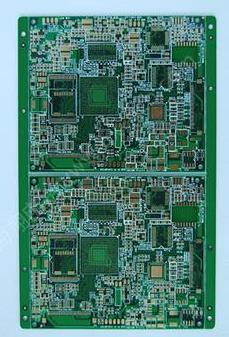Antenna application long PCB circuit board
Modern wireless applications require rugged antennas, which usually means a long printed circuit board is required to integrate and support these applications. The antenna design may cause or destroy your application, but relying on a long PCB can help you get the right job done.
The antenna can be directly mounted on the long printed circuit board, and the copper optimized design can improve its performance.
Antennas are often a very difficult area to design, and working with experts can help you optimize the impact of your circuit board.
Antenna application use
Almost every modern device uses a wireless antenna, and these devices arrive in our homes. From mobile phones and coffee machines to new washing machines and televisions, there is an antenna, which may be placed directly on the circuit board.

Printed circuit board antenna applications vary significantly based on signal strength and requirements, so you will see a variety of different antenna designs in today's PCBs.
This loop is the most basic iteration of a long PCB antenna, where the manufacturer creates a closed loop of copper wire connected to the antenna terminals. Loops don't have to be round, but they do require as large a circle as possible, because larger means more efficient and better operation. You will find loops where there is no need for efficient signals, such as your garage door remote control.
Patch antennas are suitable for the production of coaxial cables or microstrip lines and are a relatively efficient choice. Due to strong support and narrow bandwidth, copper area design is common in WLAN networks. The thicker the dielectric material, the better the bandwidth.
The zigzag line allows the conductor to move left and right to increase strength, while limiting the size of the antenna. Due to design reasons, its radiation resistance and efficiency have decreased, but if size is the most concerned issue, it may be good.
A slot antenna is a slot cut on a metal sheet or directly on a copper plane on the PCB. This is a complicated design and needs to be matched because its impedance is on average around a few hundred ohms. This is a design often used for phased arrays.
Prevent bow and twist on the PCB circuit board
If the x/y and z coordinates of the surface mount and through-hole components do not match the PCB, the bow and twist problems on the printed circuit board may cause the components and parts to shift during the PCB assembly process, and then it will make the PCB assembly process very consuming Time and difficulty.
IPC-6012 defines the maximum bending and twisting of the circuit board by 0.75%, but some strict designs only allow bending and twisting of no more than 0.5%. For IPC guidelines on how to measure bows and twists, please refer to the following.
Prevent bowing and twisting on the circuit board:
1. PCB design: If necessary, PCB designers should use copper wires to balance the layer-to-layer design to evenly distribute copper.
2. Laminating: Unless there are specific impedance requirements, the prepreg between PCB layers must be symmetrical.
3. Multi-layer printed circuit boards should use the same material manufacturer's core and prepreg, because different manufacturers may cause problems during the lamination process.
6. Very thin printed circuit boards can be easily twisted and twisted, so they should be observed during each process.
7. Bake the printed circuit board, make sure there is no moisture, and place it on a flat surface during the cooling process.
8. The circuit board will be blind and the buried through holes are easier to bend and bend, so they must be carefully handled and controlled during the manufacturing process.
Bowing and distortion problems not only occur during the PCB manufacturing process, but are also caused by uneven copper distribution in the Gerber file.
If impedance or special requirements are not required, circuit board designers should use symmetrical stacking to design multilayer PCBs. The weight of copper should be symmetrical as well as the thickness of the prepreg and core.